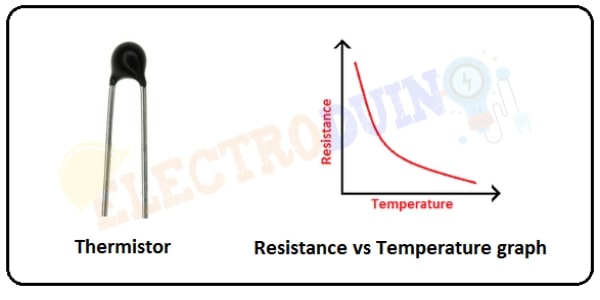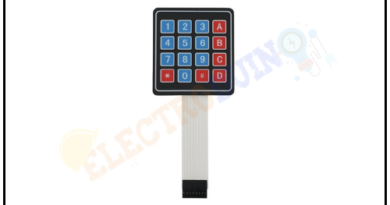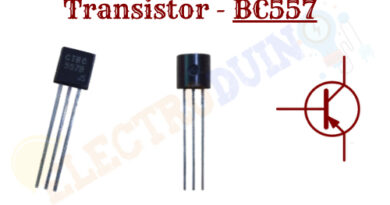DHT11 / DHT22 Temperature and Humidity Sensor Module
Hello friends! Welcome back to ElectroDuino. This blog is base on DHT11 / DHT22 Temperature and Humidity Sensor / Module | How its work? In this blog, we will discuss Introduction to DHT11 / DHT22 Temperature and Humidity Sensor, Difference between DHT11 / DHT22 Sensor and DHT11 / DHT22 module, Difference between DHT11 Sensor and DHT22 Sensor, pin diagram of sensors and modules, Working Principle, its Specifications, and applications.
Introduction
DHT11 and DHT22 are a low cost best performance digital sensor in electronics. These are available in the market as a sensor or as a module. The DHT11 and DHT22 sensors can measure temperature and humidity at the same time. These sensors provide output values in decimal numbers. Both sensors are consist of two parts, one is a capacitive humidity sensor and another one is an NTC thermistor. Where the capacitive humidity sensor is used to measure Relative* humidity and the thermistor is used to measure Temperature. DHT11 and DHT12 Sensor working principles are same, but the major difference is measuring humidity and temperature range.

Difference between DHT11 / DHT22 Sensor and module:
DHT11 / DHT22 Sensors are available in the market as a sensor or as a module. Differences are
-
DHT11 / DHT22 as Sensor:
This sensor has 4 pins. where the 3rd pin is No Connection(NC), it’s not used. The sensor has no pull-up resistor and power LED(maybe). When you used this sensor in projects this time you can connect an external pull-up resistor with the sensor data pin to get the output.
-
DHT11 / DHT22 as Module:
These modules have 3 pins. The module consists of a pull-up resistor and a power LED. So, when you used this module in projects this time you do not need to connect an external pull-up resistor with the sensor data pin to get the output.
Difference between DHT11 Sensor and DHT22 Sensor
The DHTxx sensor series has two types of sensors, these are DHT11 and DHT22. These have different characteristics.
| DHT11 Sensor | DHT22 Sensor |
| The temperature measuring range is from 0 to 50 degrees Celsius with +-2 degrees accuracy. | The temperature measuring range is from -40 to +125 degrees Celsius with +-0.5 degrees accuracy. |
| The humidity measuring range is from 20 to 80% with 5% accuracy. | humidity measuring range, from 0 to 100% with 2-5% accuracy. |
| The sampling rate is 1Hz, Which means we get one new reading every second. | The sampling rate is 0.5Hz, Which means we get one new reading every two seconds. |
DHT11 / DHT22 Sensor and Module Pin Diagram
DHT11 and DHT22 Sensor Pin Diagram / Pinout

| Pin No | Pin Name | Description |
| 1 | VCC | Power supply 3.5V to 5.5V |
| 2 | Data | Outputs both Temperature and Humidity through serial Data |
| 3 | NC | No Connection and hence not used |
| 4 | Ground | Connected to the ground of the Power supply |
DHT11 and DHT22 Sensor Module Pin Diagram / Pinout

| Pin No | Pin Name | Description |
| 1 | Vcc | Power supply 3.5V to 5.5V |
| 2 | Data | Outputs both Temperature and Humidity through serial Data |
| 3 | Ground | Connected to the ground of the Power supply |
How DHT11 / DHT22 Sensor Works
In this part, we will show you which components are used to construct DHT11 and DHT22 Temperature and Humidity Sensors and how these components work. Mainly both sensors are consist of 3 key components, these are a humidity sensing component, an NTC temperature sensor (or thermistor), and an IC on the backside of the sensor. Let’s see how these are work.
Humidity Sensing Component:
The humidity sensing component has two electrodes with a moisture-holding substrate as a dielectric between them. When the moisture content changes (humidity changes) in our environment, the conductivity of the substrate changes, or the resistance between these electrodes changes. The IC measure and process the changing of resistance value and convert this value into a digital output value. This digital output is easy to read for a microcontroller.

NTC temperature sensor (or thermistor):
A thermistor is a variable resistor, its resistance changes according to changes of temperature. The NTC word means that it is a Negative Temperature coefficient, which indicates that its resistance decreases with the increase of the temperature. Normally this sensor is made by semiconductor ceramic or polymers, so we get a larger resistance value for the smallest change in temperature. These changes of the resistance value are easy to read by a microcontroller.

Specifications
| Parameter | Value for DHT11 | Value for DHT22 |
| Working input voltage | 3V to 5V | 3V to 5V |
| Max Current use during conversion (while requesting data) | 2.5mA | 2.5mA |
| Output | Serial data | Serial data |
| Temperature Range | 0°C to 50°C | -40°C to 80°C |
| Humidity Range | 20% to 90% | 0% to 100% |
| Humidity Accuracy | 5% | 2-5% |
| Temperature Accuracy | +-2 degrees | +-0.5 degrees |
| Sampling rate | 1Hz | 0.5Hz |
| Resolution | Temperature and Humidity both are 16-bit | Temperature and Humidity both are 16-bit |
| Sensor body size | 15.5mm x 12mm x 5.5mm | 15.1mm x 25mm x 7.7mm |
Applications
- Measuring humidity and temperature values inside the room, Office, and cars.
- Making the Local Weather station systems.
- Measuring humidity and temperature values in air conditioning systems.
- Industries have used this sensor for measuring humidity values and as a safety measure.



